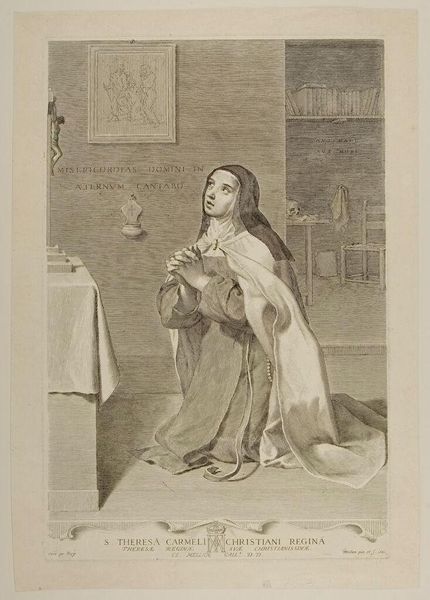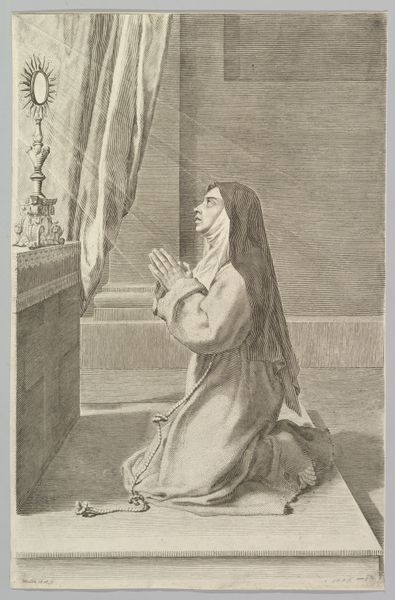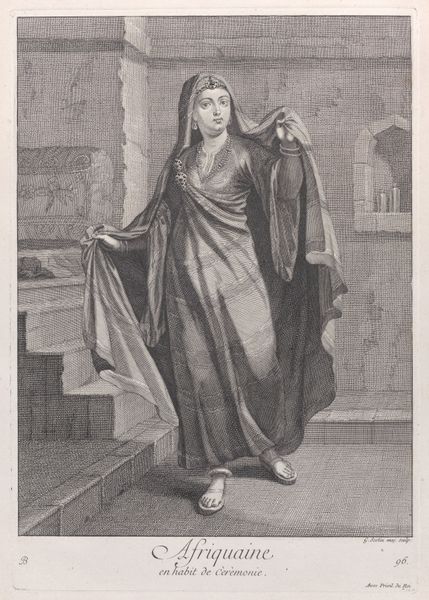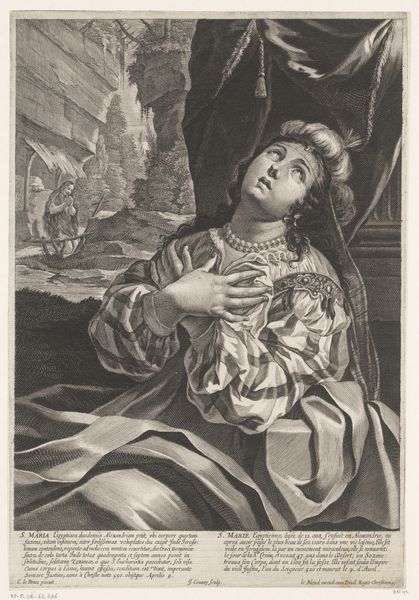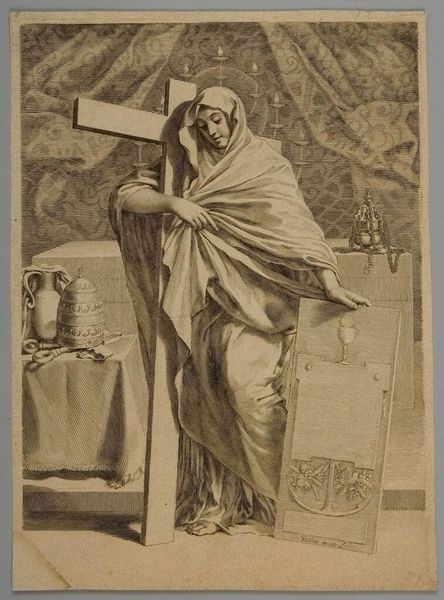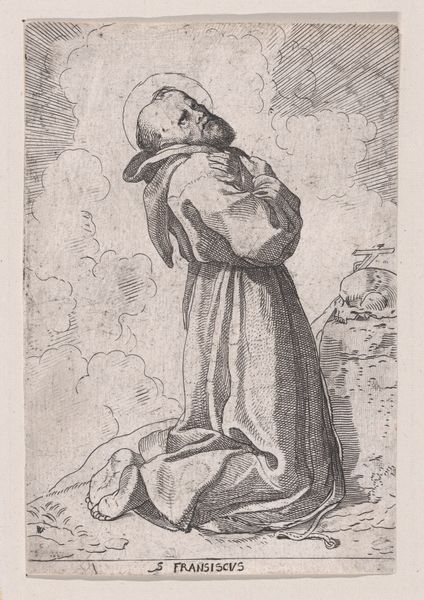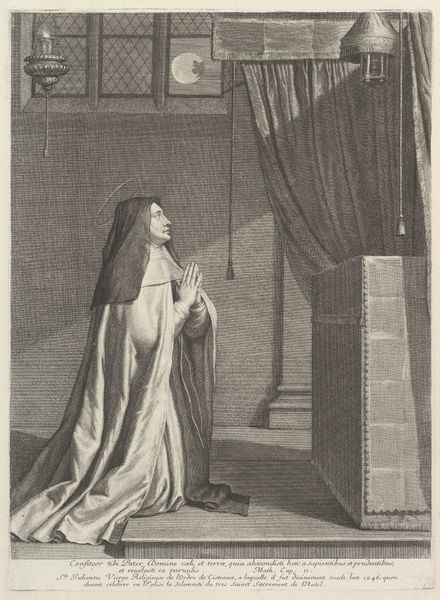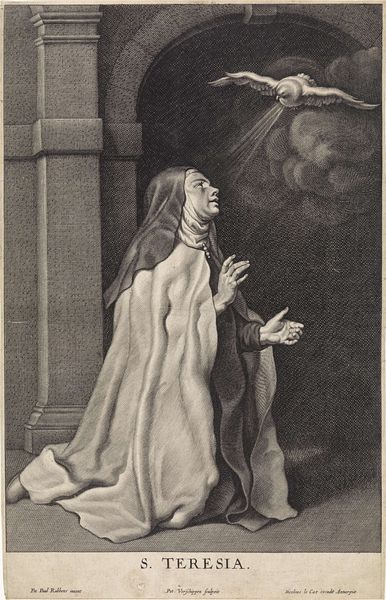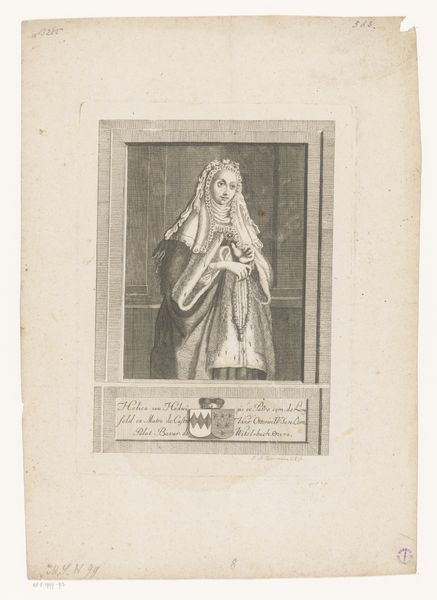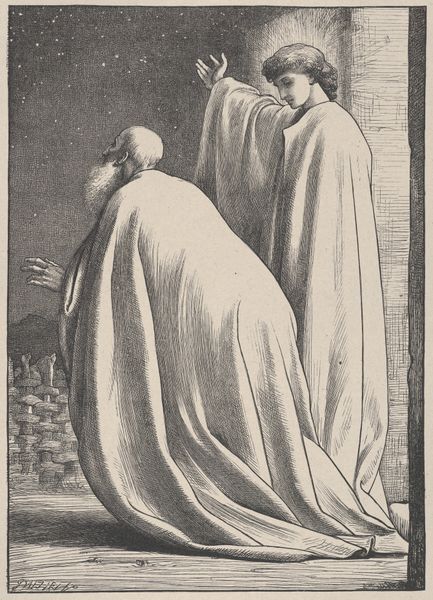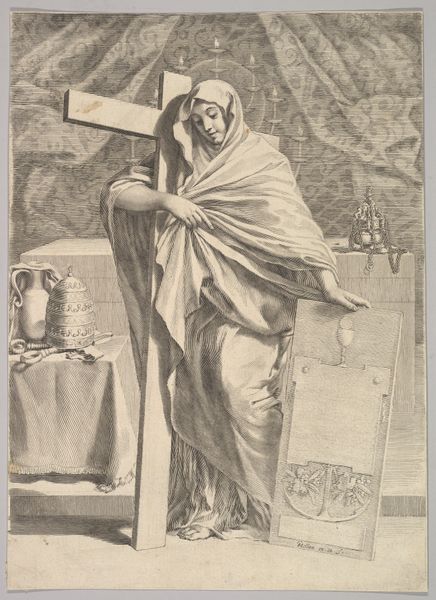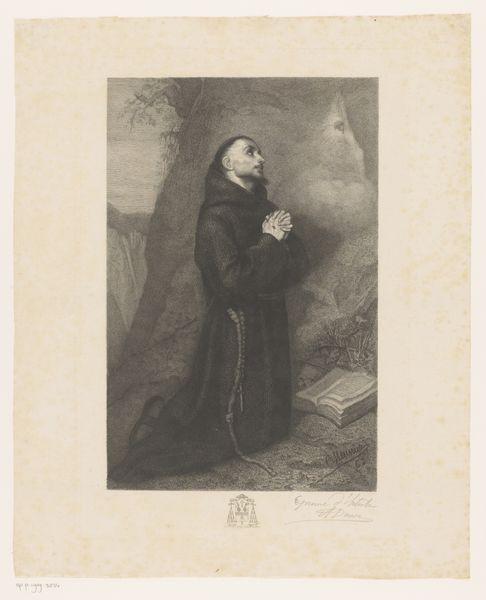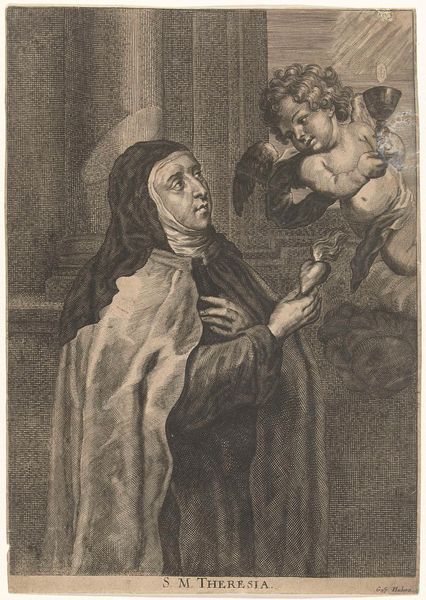
drawing, print, engraving
#
portrait
#
drawing
#
baroque
# print
#
figuration
#
line
#
history-painting
#
engraving
Dimensions: sheet: 17 5/16 x 11 5/16 in. (44 x 28.8 cm)
Copyright: Public Domain
Curator: Look at this stunning engraving from 1661 by Claude Mellan titled “St. Theresa Kneeling in Prayer.” It’s currently housed at the Metropolitan Museum of Art. What strikes you most about this piece? Editor: Immediately, it’s the incredible detail achieved solely through lines. It almost feels photographic, the way light and shadow are rendered. You can practically feel the texture of her robes and the roughness of the wall. Curator: Mellan's technical skill is certainly remarkable. Considering the social and historical climate, the role of women in religious orders, and especially figures like St. Theresa, were being reshaped during the Counter-Reformation. Here we see Theresa in a moment of personal reflection and devotion, her inner life seemingly laid bare through Mellan’s skillful strokes. Editor: Right, and the material production itself echoes that austerity. Engraving demands meticulous labor and control. Each line, each mark, represents a conscious decision and significant time investment. Look at the desk next to St Theresa, for example. It almost represents the opposite of baroque richness. Curator: Precisely. And I find myself questioning the almost voyeuristic gaze it allows. Is this devotional? Or is it also about power, about depicting and containing female piety? We have to consider that, like much art of this era, these images served a particular purpose in society, often to enforce certain ideas and morals onto women in society. Editor: It's a crucial point, and perhaps Mellan’s choice of engraving allows him to produce multiples, democratizing and disseminating that vision of idealized female spirituality, through mass production, and the materials required, further influencing a vast audience. It solidifies it as commodity and construct. Curator: Yes! The artwork raises a dialogue about how female identity was molded through visual media during the Baroque period. St. Theresa kneeling becomes a representation of humility and supplication and therefore a type of ideal. Editor: Absolutely. For me, this piece emphasizes how material choices and methods are also essential to any such discussion of religious idealism. It adds so many more layers of contextual understanding. Curator: Examining its place at the convergence of religion, labor, and female representation, truly helps appreciate this. Editor: Indeed. The act of production, as much as the final product, holds considerable value in understanding a work like this.
Comments
No comments
Be the first to comment and join the conversation on the ultimate creative platform.
